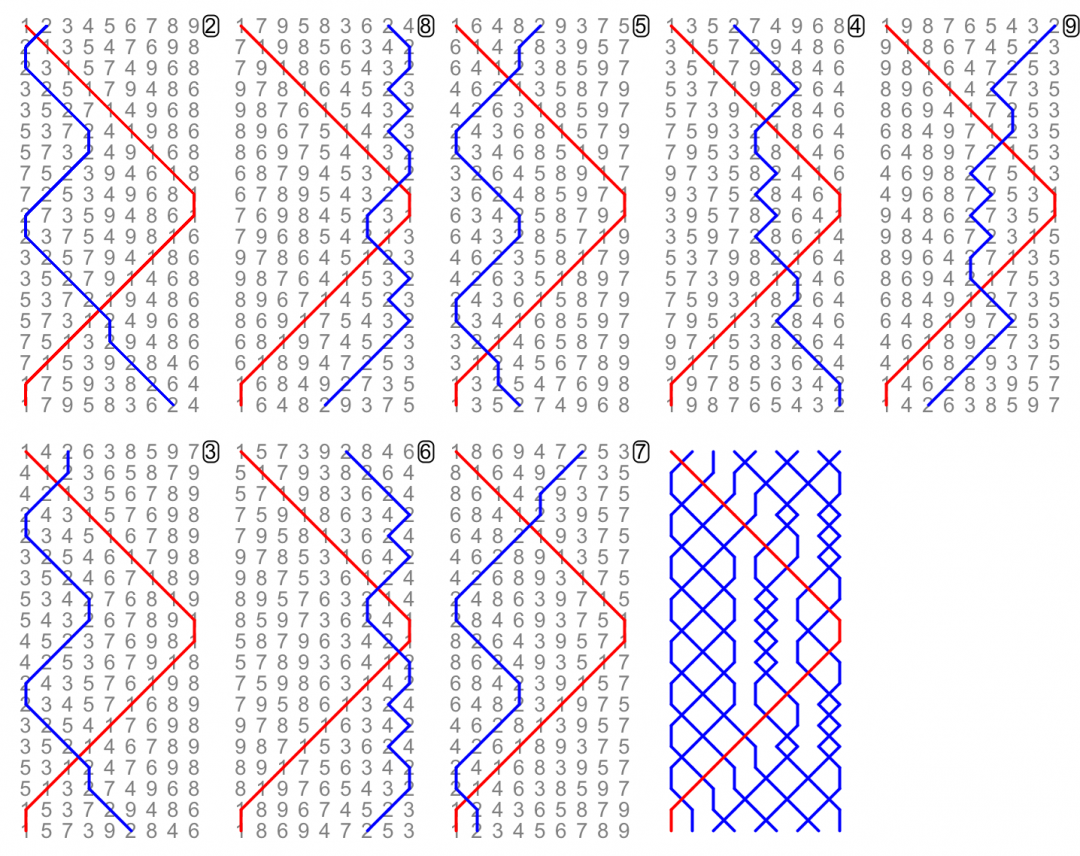This week's Ringing World (20th May 2022, number 5795, if you are reading later) has an interesting article by Richard Smith about a new method: Jura Bob Caters. I will try not to reproduce too much of what he writes, which includes fascinating material about how he designed the method. If you don't have a subscription to the Ringing World, you can buy the individual issue for £2.10 and it would be well worth it.
Richard explains that he wanted to put an interesting plain caters method in the 2022 Ringing World Diary, and after being unable to find one, composed his own. It was printed in the diary as an as-yet-unnamed method, and I confess that I didn't pay much attention to it. However, Richard and a band from Cambridge have now rung a quarter peal of it and given it the name Jura. I'm not sure whether he had in mind the Scottish island or the French/Swiss mountains. Anyway, it's a nice method and I think it will be a good one for us to try in the tower in Glasgow. The great thing is that it only needs 8 inside ringers, so it will be ideal for the frequent occasions when we have more than a surprise major band but not quite a surprise royal band.

I have naturally also started wondering whether we could try it on handbells. Probably not immediately, as we have an unfinished London Royal quarter peal project and then there are several other surprise royal methods that I want to move on to. But I have had a little go on Mabel by myself. In Richard's view, the level of difficulty of Jura for tower bell ringing is approximately equal to Bristol Major, maybe a little easier. On handbells I am finding it much harder, partly of course through lack of familiarity, but also more difficult than typical wrong-place surprise major methods that we have rung from time to time.
One of the points made in Richard's article is that very few odd-bell methods are rung on 7 or more bells, apart from Plain Bob, Grandsire, Stedman and Erin. On handbells that is even more true. Here are some observations based on Jura, which would also apply to other single-hunt plain caters methods and to some extent also to triples methods. Taken all together, these observations produce a rather alien experience when ringing the method.
- None of the natural handbell pairs are coursing. In caters there are four different positions for a pair to be in, the same as royal, but only 3-4 and 5-6 correspond to handbell pairs. The others are the coursing position and the 4-5 position. The 7-8 position is the same as the 3-4 position.
- There isn't a symmetrical place bell. There are eight place bells in total, and they occur in four pairs of mutual opposites. The plain course (for one bell or for a handbell pair) has two points of symmetry, as usual, but they are both at lead ends. This also means that a handbell pair doesn't simultaneously ring two place bells that are symmetrical to each other, as in for example 6th and 8th place bells for the tenors in Yorkshire.
- The fourth lead end, which is the point of symmetry in the plain course, is 1987654320. At this lead end, 5-6 are in their home positions but reversed. So during the plain course, 5-6 ring four leads and then the same four leads but with the bells swapped. And the four leads that they ring consist of two leads and the symmetrical versions of those two leads. 5-6 is the easiest pair: they ring two leads, then the same two leads backwards, then do everything again with 5 and 6 swapped. Possibly the easiest quarter peal composition for handbells is this one, with bobs on 234 and on 789 so that 5-6 are unaffected and available for the conductor.
1296 Jura Bob Caters 4 8 23456789 -------------- - 3 23456897 - 3 23456978 - 3 23456789 --------------
- It's a little tricky to say what constitutes right-place or wrong-place work. In plain hunting on an odd number, which we would really have to say is right-place, lying behind is backstroke then handstroke which on even numbers is a characteristic of wrong-place work. Consider 4th place bell in Jura. It starts by going up, so it's wrong hunting, then it does point 7ths, switching it to right hunting, and then makes 5ths, handstroke then backstroke. That all seems fine until you realise that a hypothetical bell right hunting on the front and making 5ths would have to do backstroke then handstroke in 5ths. I think the answer is that when right hunting in an odd bell method, making a place in an odd position is hand-then-back when done from above but back-then-hand when done from below. Conversely, making a place in an even position is hand-then-back when done from below but back-then-hand when done from above. However, it feels unfamiliar and increases the necessary level of concentration.